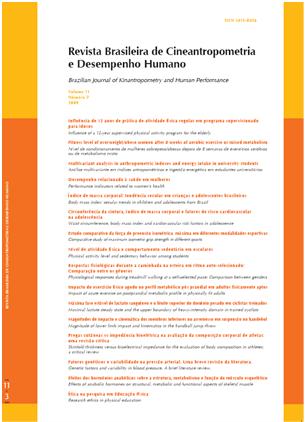Body mass index: secular trends in children and adolescents from Brazil
DOI:
https://doi.org/10.1590/1980-0037.2009v11n3p280Abstract
The aim of this study was to compare the distribution of body mass index (BMI) between Brazilian children and adolescents aged 7 to 17 years evaluated in 1989 and in 2004/2005. BMI distribution was compared using two large surveys conducted throughout Brazil in 1989 and 2004/2005. The samples consisted of 16,012 (7908 girls) and 54,574 (24,144 girls) children and adolescents in the first and second survey, respectively. BMI distribution was evaluated using the 15th (P15), 50th (P50), and 85th percentiles (P85). The results showed practically no changes in P15, whereas P50 and P85 increased in boys along all ages and in girls until 11/12 years of age. The increase in P85 was higher than that in P50 in both genders. As observed in other countries, in Brazil BMI seems to be increasing in children and adolescents with age, with a consequent increase in the prevalence of overweight and obesity in this age group.



